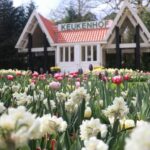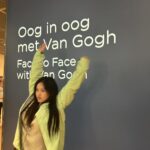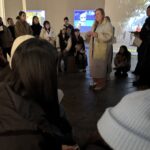Curating Intimacy: Experimental Models and Critical Reflections
In my initial curatorial concept, I focused on how romantic relationships are socially conditioned and structured. However, as my research progressed, I realized that intimacy is not limited to romantic love—it extends to familial bonds, friendships, and even transient encounters between strangers. Intimacy is not merely a private phenomenon; it is embedded within broader social, cultural, and institutional frameworks. This shift in perspective led me to consider whether curating could move beyond the traditional function of displaying intimacy and instead create a space where audiences can actively experience the fluidity of intimate relationships.
Fran Cottell’s House Projects serves as a critical reference point. By turning her domestic space into an exhibition, she exposes the invisible structures that organize intimacy within the home. Her work suggests that the home is not just a physical space but a social construct that dictates how relationships are formed, maintained, and negotiated . If Cottell’s project uses domestic space to examine intimacy, could a speculative exhibition deconstruct and reconfigure the architecture of intimacy itself? Could curating become a mode of exposing and interrogating the social mechanisms that regulate closeness and distance?
This realization led me to develop a series of experimental curatorial models that aim to transform spectators into active participants in the exploration of intimacy. One such experiment involves a Time Capsule of Intimacy, where audience members contribute objects that symbolize a significant intimate relationship. These objects, along with written letters to their future selves, will be sealed and reopened after a fixed period. This installation probes the temporality of intimacy—which emotions and connections endure, and which fade over time? By turning private memories into exhibited artifacts, does the project musealize intimacy, stripping it of its personal essence? The inspiration for this model comes from Sophie Calle’s Take Care of Yourself (2007), where she invited women from different professions to interpret a breakup letter, demonstrating how intimacy is both personal and subject to social mediation .
Another curatorial experiment questions whether intimacy can be contractual. In contemporary society, relationships—whether romantic, familial, or platonic—are often mediated through legal and bureaucratic structures. Inspired by Jonas Lund’s Smart Contracts (2022), which utilizes blockchain technology to create self-executing art contracts, I propose an Intimacy Contract, where participants negotiate the terms of a hypothetical relationship. This model challenges the assumption that intimacy is purely spontaneous—what happens when love is subjected to contractual governance? Does it create security or does it introduce disciplinary control? By framing relationships through legalistic language, does the project reveal the institutionalization of emotions?
A third experiment, Silent Dialogues, explores non-verbal communication as a foundation of intimacy. Two strangers sit across from each other for five minutes, engaging solely through sustained eye contact. This piece draws from Marina Abramović’s The Artist Is Present (2010), where prolonged mutual gazing created an emotionally charged space between artist and audience . By removing speech, the project raises critical questions: Does intimacy require language? Can silence construct a relationship? If intimacy is predicated on interaction, does mere presence suffice to establish a meaningful connection?
As I refine these models, I become increasingly aware of the ethical complexities of curating intimacy as an immersive experience. My project does not simply exhibit intimacy but actively stages relational encounters, raising the question: are participants truly engaging, or are they being compelled into emotional labor? This dilemma echoes Claire Bishop’s critique of relational aesthetics, where participatory art risks becoming emotional consumption rather than genuine connection. Unlike the Museum of Broken Relationships, which offers a distanced perspective, my project invites direct involvement—blurring the line between participation and exploitation.
Moving forward, I seek a methodology that remains critically aware of intimacy’s social, cultural, and institutional conditioning. My next step is to examine how intimacy is shaped across different contexts, exploring artists like Martine Syms and Deirdre O’Mahoney. Rather than providing answers, my aim is to curate a space where audiences critically reflect on their own entanglement in the politics of intimacy.
Summary: Why these two artists(Martine Syms and Deirdre O’Mahoney.)?
Exploring Syms and O ‘Mahoney allows me to move my curatorial research beyond individual emotional experiences to larger social, cultural and ecological frameworks:
- Syms provides a perspective on how digital culture affects intimacy, helping me explore how algorithms, media, and surveillance shape modern emotional experiences.
- O ‘Mahoney’s focus on ecological intimacy inspired me to think about the relationship between people and land, community history, and how intimacy is embedded in larger environmental networks.
References
Abramović, Marina. The Artist Is Present. Performance at The Museum of Modern Art, New York, 2010.
Bishop, Claire. Artificial Hells: Participatory Art and the Politics of Spectatorship. London: Verso, 2012.
Bourriaud, Nicolas. Relational Aesthetics. Dijon: Les Presses du Réel, 2002.
Calle, Sophie. Take Care of Yourself. Venice Biennale, 2007.
Cottell, Fran. The House Projects. http://www.francottell.com
Lund, Jonas. Smart Contracts. 2022. https://jonaslund.com/
Smith, Terry. Thinking Contemporary Curating. New York: Independent Curators International, 2012.










s2654609
10 March 2025 — 17:55
Your post presents a nuanced and thought-provoking exploration of curating intimacy as an immersive experience, moving beyond the traditional exhibition model to one that actively stages relational encounters. Your shift in perspective—from focusing solely on romantic relationships to examining intimacy as a broader social construct—demonstrates a critical awareness of how intimacy is embedded within familial, platonic, and even transient social structures. This broader framework strengthens your curatorial approach, aligning with contemporary discourse on how intimacy is mediated, conditioned, and institutionalized.
Your engagement with Fran Cottell’s House Projects is particularly insightful, as it highlights the invisible social structures that shape intimacy within domestic spaces. The idea of extending this curatorial logic into a speculative exhibition that deconstructs intimacy itself raises compelling questions: Can curating serve as a critical tool for interrogating intimacy rather than merely representing it? Can an exhibition destabilize conventional understandings of closeness and distance?
The three experimental curatorial models you propose—Time Capsule of Intimacy, Intimacy Contract, and Silent Dialogues—each offer a distinct yet interconnected approach to examining how intimacy is performed, negotiated, and experienced:
Time Capsule of Intimacy effectively materializes the temporality of emotional bonds, allowing participants to witness how relationships shift over time. Your reference to Sophie Calle’s Take Care of Yourself adds depth, emphasizing how intimacy is not only deeply personal but also shaped by external cultural and social frameworks.
Intimacy Contract is a bold and provocative intervention. By drawing from Jonas Lund’s Smart Contracts, you challenge the assumption that intimacy is purely organic or spontaneous and instead reveal its entanglement with legal, bureaucratic, and institutional structures. Your question—whether contractual intimacy creates security or control—is particularly relevant in contemporary discussions on consent, digital privacy, and emotional labor.
Silent Dialogues takes inspiration from Marina Abramović’s The Artist Is Present, but your framing of eye contact as an intimate exchange devoid of verbal communication adds a new layer of inquiry. The project raises fascinating questions: Does intimacy require language? Is presence alone enough to form a meaningful connection? The tension between mutual engagement and the potential discomfort of forced emotional participation is especially thought-provoking.
Your concerns about the ethical complexities of curating intimacy are valid and demonstrate a critical awareness of participatory art’s potential risks. You rightly draw on Claire Bishop’s critique of relational aesthetics, questioning whether audience participation in these curatorial experiments encourages genuine connection or simply turns intimacy into emotional consumption. This dilemma is central to many participatory art practices—how can curators create immersive experiences without exploiting the emotions of participants?
Your decision to incorporate Martine Syms and Deirdre O’Mahoney is a well-grounded expansion of your research. By integrating Syms’ exploration of digital intimacy and O’Mahoney’s ecological perspective on intimacy, you move beyond an individualistic lens to a more holistic, systemic, and interdisciplinary approach.
One area you might further explore is how different cultural contexts influence the experience of intimacy. While your models focus on personal, contractual, and silent exchanges, how might cultural norms, historical narratives, or digital networks further shape the conditions of intimacy? Could a cross-cultural dimension be introduced to the project, inviting visitors from diverse backgrounds to contribute to a global discourse on intimacy?
Overall, your post presents an intellectually rigorous and methodologically ambitious approach to curating intimacy. Your experimental curatorial strategies demonstrate a sophisticated engagement with both theoretical discourse and practical exhibition-making, making this an exciting and thought-provoking curatorial proposal. I look forward to seeing how your ideas continue to evolve.